Remember when you could blast out cold emails and prospects would magically appear? Yeah, me neither. B2B marketing has changed. That old pushy playbook feels wrong now, inauthentic. Buyers want help, expertise... they want a guide, not a sales pitch. That's what got me passionate about inbound, and why I'm betting you'll find value in this approach, too.
But not all inbound is created equal. In today's market, it's about going beyond simply generating leads and toward establishing relationships based on genuine value and industry understanding. We'll get into the granular tactics soon, but before that, let's set the stage.
![How to Influence B2B Buying Journey [Case Study + Best Practices]](https://assets-global.website-files.com/642532eebf0ae34ecb684133/64aadcc738dce58ac772e3a9_b2b-buying-journey-gartner.png)
Understanding the “Why” Behind B2B Inbound
Many businesses mistakenly focus on the 'what' of inbound - blogs, SEO, webinars. While these tools are undeniably crucial, remember inbound is a philosophy, not merely a toolbox. Its true success lies in deeply understanding your target audience and then strategically aligning your content to their complex pain points, not your product features.
It's about positioning yourself as the go-to authority, solving pressing problems for your potential clients at every stage of their journey. Inbound builds trust incrementally—no sudden sales pitch. That's where long-term success lives.
Now, the fun part – where your SaaS agency expertise shines. Let's get into the specifics, because that's where the magic happens.
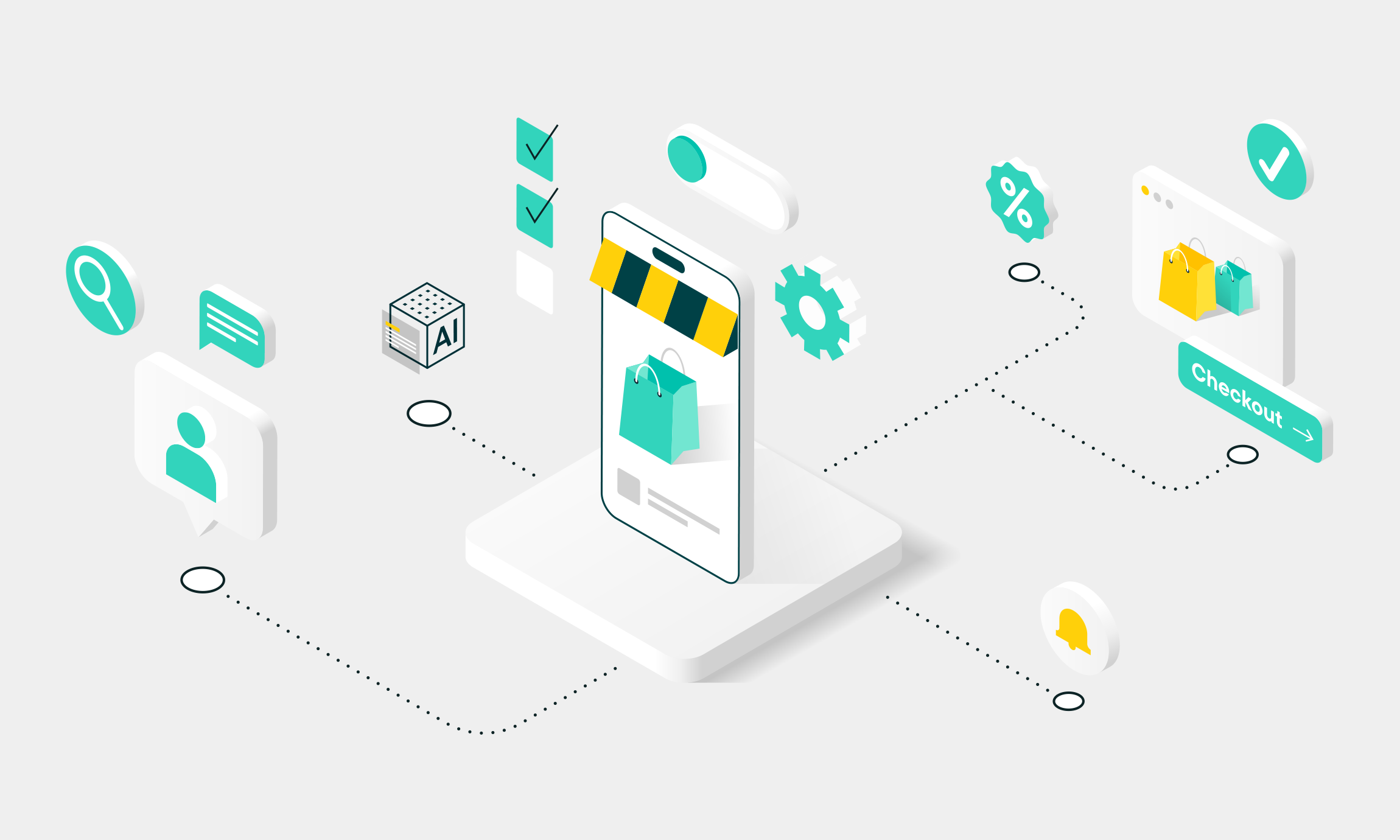
Hyper-Nuanced Targeting: Not Just Personas, But Psychographics
Yes, buyer personas are essential. But, let's move beyond demographics. Consider psychographic segmentation:
Pain Points: Dig deep. Explore not just technical problems, but the career anxieties, internal roadblocks, and reputational worries your ideal buyer faces. Look further than features; think aspirations achieved.
Values: What does your target business aspire to? Innovation? Social responsibility? Tailor content to align with their ethos, not just their job description.
Preferred Channels: Forget generic “B2B” habits. Where do your prospects consume information? Industry-specific forums, niche podcasts, or perhaps webinars with highly respected thought leaders? Meet them where they are.
Example: Suppose you offer a data security SaaS for finance companies. It's tempting to go broad with content (“Top Cybersecurity Risks”). But if you segment based on psychographics - say, Chief Compliance Officers driven by reputation preservation - consider a piece analyzing regulatory shifts on social media or an actionable checklist tailored to passing external audits. This level of insight shows you truly understand their world.
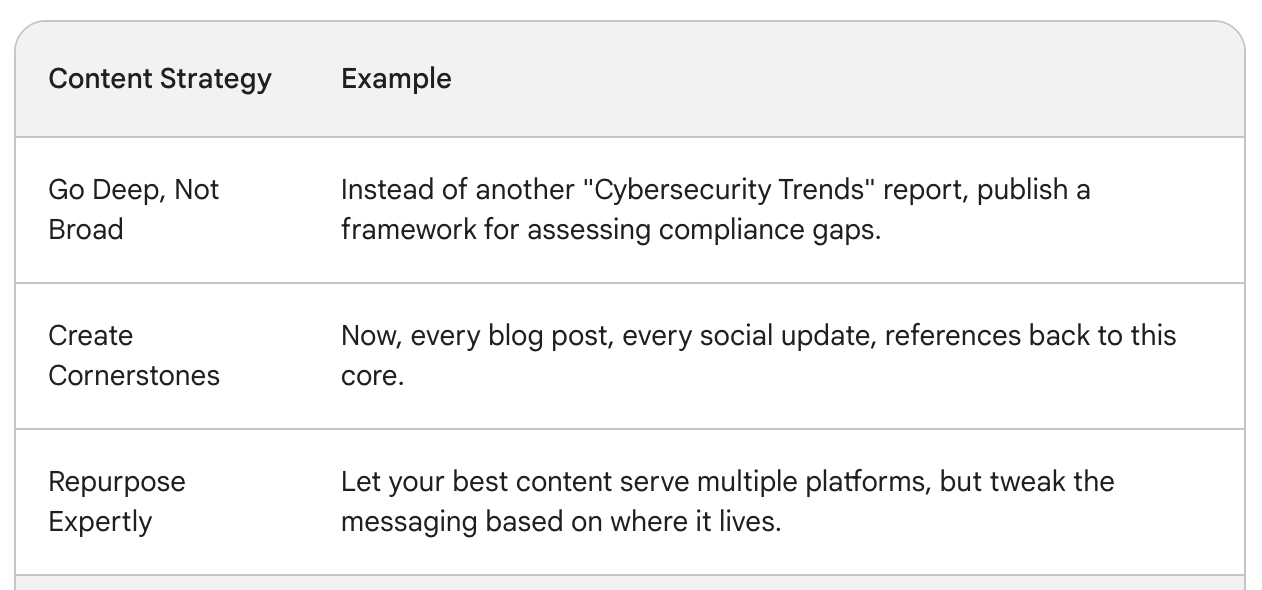
Reframing Content Strategy: It's Not Quantity, It's Context
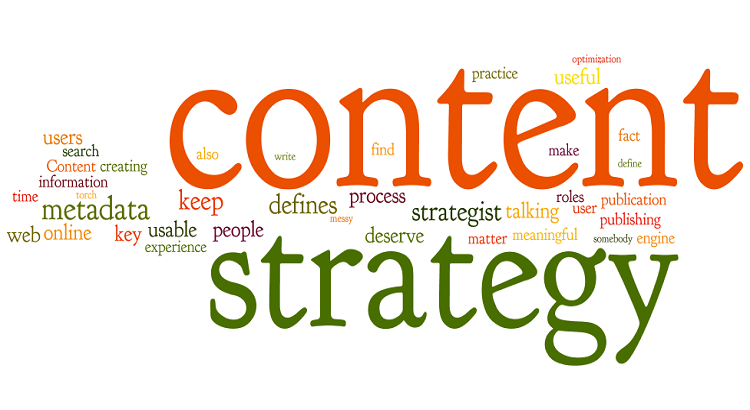
The volume of B2B content is overwhelming. You're no longer trying to outshout the competition, but to provide a truly differentiated signal amidst the noise. Here's the shift in thinking:
Go Deep, Not Broad: Choose one core pillar and unpack it. Rather than five generic tips, do an in-depth analysis of a single pain point, illustrated with case studies and actionable advice your solution might help solve.
Create Cornerstones: One exceptional piece becomes your hub. Blog posts, videos, podcasts can then link back as micro-content. This maximizes SEO without sacrificing depth.
Repurpose Expertly: Turn webinars into articles, long-form guides into infographics. Let your best content serve multiple platforms, but tweak the messaging based on where it lives.
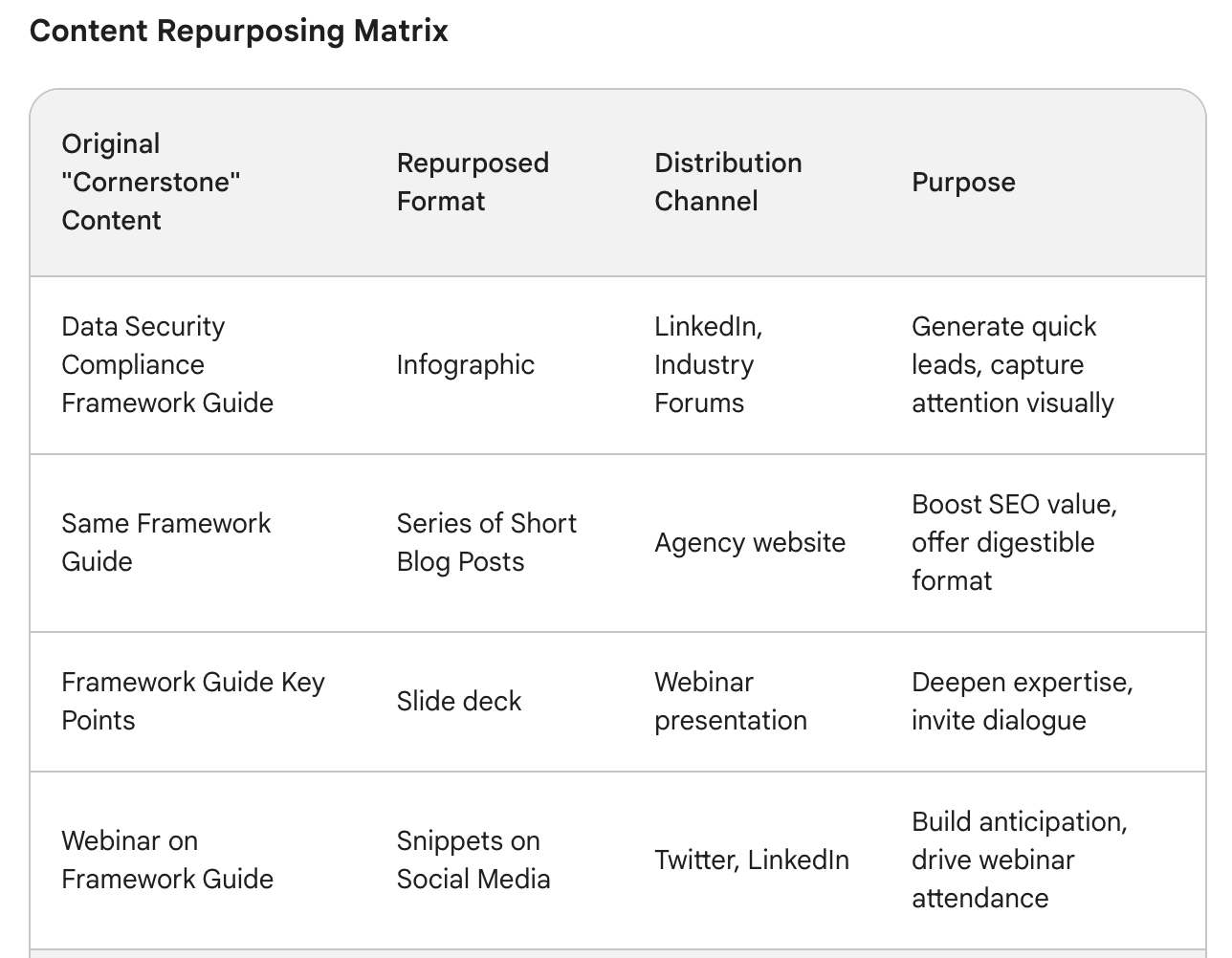
Example: Let's revisit our data security SaaS. Instead of another “Cybersecurity Trends” report, publish a framework for assessing compliance gaps. Now, every blog post, every social update, references back to this core. You're providing an anchor of practical information rather than just adding to the noise.

Nurturing, The SaaS Inbound Secret Weapon
Automated email funnels are vital, but don't fall into the trap of the generic welcome series. B2B nurturing is about anticipating objections and building trust in your expertise over time:
| Stage | Type of Content | Purpose |
|---|---|---|
| Early - Awareness | Thought leadership articles, infographics offering easily digestible insights. | Establish credibility, show relevance without feeling "salesy" |
| Mid - Consideration | Case studies that highlight similar clients to theirs, checklists relevant to their pain points. | Address concerns, prove success in situations mirroring their own |
| Late - Decision | Detailed comparisons with competitors, ROI guides tailored to their industry. | Overcome potential objections, build a business case for your solution |
Think of nurturing as a long-term conversation. With each touchpoint, offer genuinely helpful resources. If your content answers their next question before they even have it, you've established true authority.
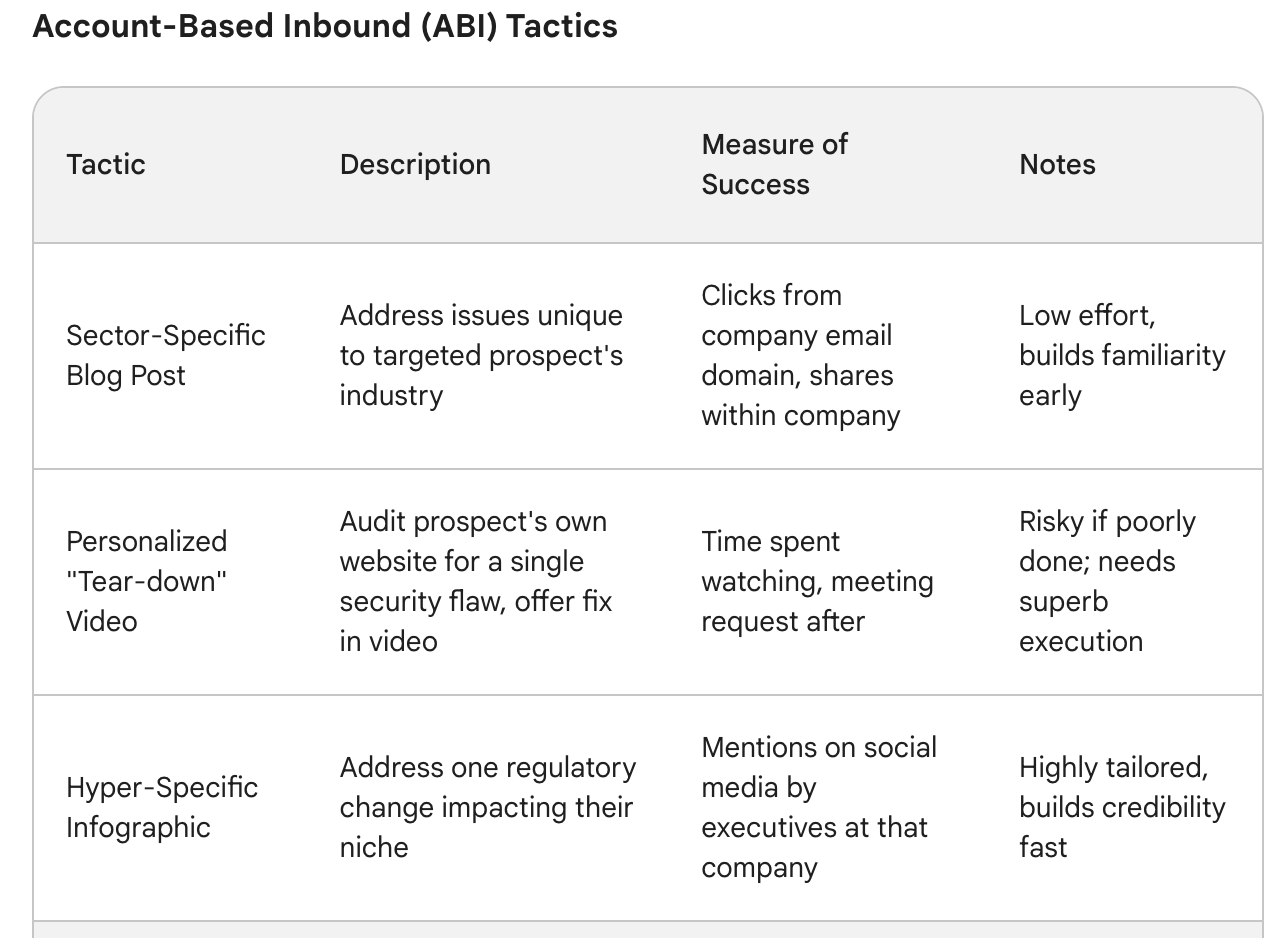
The Human Element: The Rise of Account-Based Inbound
B2B doesn't negate the power of the individual connection. This is where account-based marketing (ABM) and personalization can make a big difference. Here's how to put a unique spin on it.
Handpicked Accounts
Instead of broad-brush ABM, identify a small cluster of truly perfect-fit prospects. Build personalized content plans based on their company, leadership, and market activities. This is time-intensive, but yields higher-quality leads.
Conversation Starters, Not Pitches
A LinkedIn comment on an executive's article, a tailored slide deck shared directly.... Think highly personal outreach as part of your inbound, not separate from it. This can open doors in ways generic emails never will.
Video's Impact
Personalized video walk-throughs of a specific problem point within the prospect's company are game-changers. Use tools like Loom or Vidyard to explain their issue using their own website or documents. This level of effort demonstrates your commitment to value even before the sale.
Example: Suppose your data security SaaS has pinpointed several fintech firms within your niche. Tailor content to new regulations specific to their sector, reach out individually on LinkedIn to compliment recent press releases, or create a “Top 5 compliance worries Fintech Execs Should Lose Sleep Over” (mentioning those specific firms as hypothetical scenarios). This shows targeted understanding, not a generic spray-and-pray approach.
Measuring What Matters: Beyond Vanity Metrics
Forget website traffic or list size alone. B2B inbound is about revenue impact. Here's what to prioritize.
Content Impact Metrics
Look beyond views; track how long people engage, which pieces result in contact forms/demos, and the pipeline value those individuals represent.
Pipeline Velocity
Is nurture improving speed as deals progress? Analyze how different content impacts time spent in stages throughout the buying process.
SQL to Customer
What content helped close deals? This informs future strategy and lets you optimize content with revenue goals in mind.
Pro Tip: Avoid attributing everything to marketing alone. Collaboration with sales is crucial – are they using your content in conversations? Can they offer insights into which resources most effectively help close deals?
Staying Agile: Iterate and Adapt
B2B inbound isn't “set it and forget it.” Regularly review, listen to data, and be fearless about evolving your approach. Here's how:
“Hotwash” Campaigns: After campaigns wrap, gather your team to find bottlenecks and successes. Refine your process accordingly.
Market Intelligence: Subscribe to newsletters your ideal clients likely read. Notice which industry trends they're most engaged with, and pivot your content strategy to capture this attention.
“Borrow” Brilliance: B2B marketing isn't limited to your sector. See what's working elsewhere, then find ways to apply those tactics innovatively in your own industry. This approach adds an element of delightful surprise that draws attention.
Inbound B2B Marketing is a powerful tool, but only if executed with strategic focus and meticulous implementation. Avoid the pitfall of thinking inbound replaces relationships. It's an enhancement tool—it fosters stronger bonds, fueled by authentic expertise and value-driven thinking.
As someone who understands the SaaS B2B space from experience, weave those experiences throughout your inbound approach. Show you've solved those issues for past clients. B2B marketing is, fundamentally, about understanding complex problems and positioning yourself as the expert guide equipped to lead your prospects toward solutions. This isn't just a post, it's a framework for the long-term success of both your clients and your agency.
FAQ
1. My team is small. Can inbound still be effective for us?
Absolutely! In fact, inbound can have a transformative effect on smaller teams. By focusing on highly targeted content that solves specific pain points of your ideal clients, you'll attract higher-quality leads without a massive volume of content output. Consider outsourcing certain elements (e.g., content writing or design) to supplement your in-house resources while allowing your team to focus on strategic outreach and lead nurturing.
2. How do I create content without sounding like I'm constantly selling?
The key is shifting your mindset away from features and toward your client's biggest challenges. Every piece of content should subtly lead the reader to the realization that your solution is the missing piece in solving their problem. Showcase relevant case studies, offer downloadable toolkits, or use webinars to share insights that help, not hard-sell. When clients realize you provide value independent of purchase, that builds trust far more effectively than direct sales pitches.
3. How long until I see results from B2B inbound?
Inbound isn't about overnight returns. It requires patience and a commitment to consistency. B2B sales cycles are usually longer, so think of inbound as nurturing a relationship, not closing a quick deal. Track key metrics like website traffic, engagement, and lead quality. Set realistic expectations; it likely takes between six months to a year to see substantial ROI, but when done right, inbound builds a lead generation engine that runs long after the initial investment.
4. My competitors are doing inbound too. How do I stand out?
Hyper-specific targeting is your edge. Don't attempt to create content for the entire B2B sector. Niche down. Focus on one core pain point within your expertise and become the trusted resource for solving it. Demonstrate real-world experience with case studies featuring businesses similar to those you are aiming to attract. This level of deep understanding is far harder to replicate than generalized content.
5. What metrics should I prioritize to measure inbound success?
Avoid getting too caught up in initial “vanity metrics” like website views alone. Instead, focus on:
- Content-to-Lead Conversion: Tracking which specific resources lead to form fills or demo requests.
- Marketing Qualified Leads (MQLs): Those matching your ideal client who move into a nurturing stage after content engagement.
- SQLs to Closed Deals: How many sales-qualified leads convert, and which type of inbound content contributes most effectively to these wins.
6. Should I gate all my best content?
Balance is key. Some high-value resources (in-depth reports, templates) can be used for lead capture on contact forms. However, offering freely accessible, shorter content is vital for demonstrating your expertise and building trust. Use ungated content for awareness, then lead visitors towards gated offerings as trust develops and they see immediate value.
7. How does social media fit into my B2B inbound strategy?
Think of social less as lead generation and more as brand building and engagement. Share curated articles relevant to your niche, offer quick-hit advice via threads or carousels, and establish your presence where your ideal customers seek industry insights. Social deepens connection with your brand's personality and demonstrates that you are actively a part of the larger business landscape.
8. How does SEO play a role in inbound?
SEO and inbound go hand-in-hand. Thorough keyword research will ensure your content isn't just valuable, but discoverable. Focus on long-tail keywords hyper-relevant to your niche (e.g., not just “data security software” but “HIPAA compliance automation for mid-sized fintech”). Backlinks from reputable industry sites boost your authority, so prioritize those alongside on-page SEO techniques.
9. Does my website need an overhaul for inbound marketing?
Possibly, but assess realistically first. Your website must be well-organized, with intuitive navigation. Load speed, security, and mobile-friendliness are non-negotiable. If content is poorly formatted or outdated, do invest in updating. However, don't fall into design paralysis before launch. Your content and strategies matter most initially, you can evolve the look over time.
10. When should I outsource aspects of my inbound marketing?
If you lack the internal resources or expertise to consistently generate the high-quality content needed for inbound success, outsourcing provides immediate leverage. Consider skilled freelancers for content creation and graphic design. As inbound proves your ROI, build your team strategically based on the results you're seeing.






